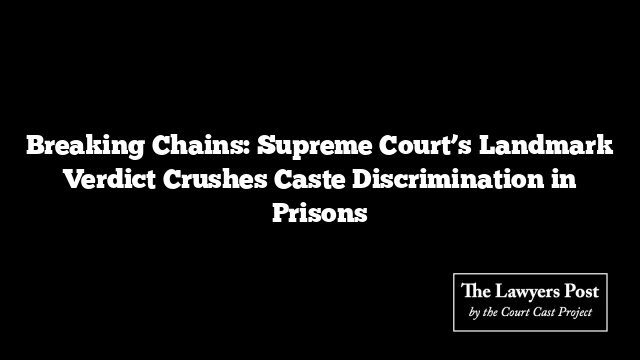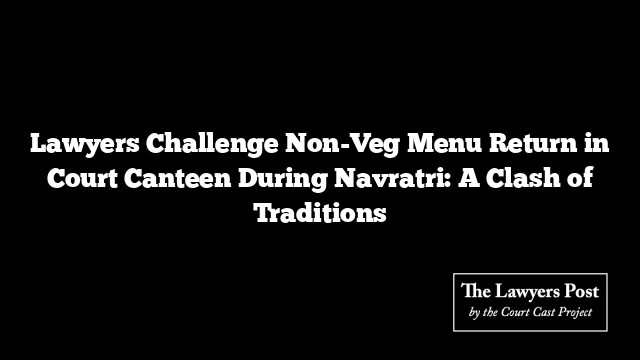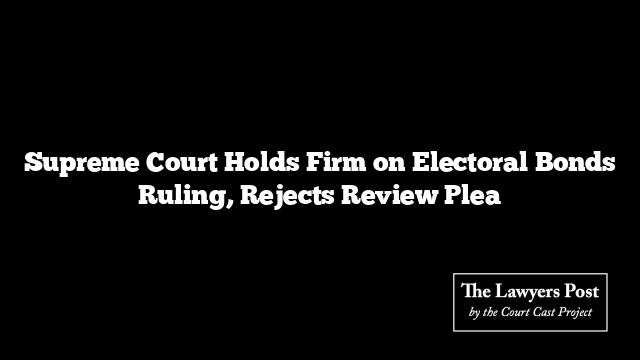In a bold and defining move, the Supreme Court of India has demanded an end to caste-based discrimination within the nation’s jails. The judgment, delivered by a bench led by Chief Justice DY Chandrachud, not only takes aim at caste prejudices in prison labor assignments but also emphasizes the inherent right to break free from societal caste barriers, underscoring the values of equality and justice for all. The Court has put the States on notice, warning that they will be held accountable for any ongoing caste-based injustices within their prison systems.
Here are the key takeaways from the verdict that could potentially reshape India’s prison system:
- End of Colonial Legacies
Criminal laws must distance themselves from the outdated, caste-reinforcing philosophies of colonial times. The Court rejected the British practice of permitting caste discrimination in prisons and ruled that such attitudes have no place in modern India. - Protection for Denotified Tribes
Laws that once branded certain communities as “criminal tribes” during colonial rule still haunt them today, labeling them as habitual offenders. The Court declared that these harmful stereotypes must end. - Caste Cannot Dictate Prison Life
Any classification of prisoners based on caste, whether overt or through subtle proxies, is unconstitutional. Such practices violate the right to equality under Article 14. - No Segregation Based on Caste Rivalries
The Court condemned prison policies that segregate inmates based on caste-related concerns, such as the potential for clashes between rival groups. It called for non-discriminatory measures to ensure prison discipline. - Right to Overcome Caste Barriers
Article 21’s protection of life and liberty extends to breaking down caste barriers. The judgment highlights that caste discrimination stifles personal growth, and prisons must allow all inmates, regardless of caste, to reform and evolve. - No More Caste-Based Labor Assignments
Forcing prisoners from marginalized castes to perform menial tasks like cleaning based solely on their caste background is equivalent to forced labor, violating Article 23. The Court emphasized that prisoners must be given a choice in the work they perform. - Systemic Change Needed
Addressing caste discrimination in prisons will require a concerted, multi-institutional effort. The Court stressed that eliminating deeply ingrained biases is a complex, systemic challenge. - End to ‘Scavenger Class’ Labels
The judgment struck down the use of terms like “scavenger class” as rooted in caste oppression. No group should be relegated to menial work based on archaic notions of purity and pollution. - Accountability for Inaction
Failure to address caste discrimination in prisons is seen as endorsing these harmful practices. The Constitution mandates the eradication of caste-based oppression, and inaction is no longer an option. - Closing Gaps in Prison Laws
The Court criticized existing prison regulations for their vague definitions of “habitual offenders” and for not explicitly prohibiting caste discrimination. Furthermore, it reinforced that no inmate should be forced into degrading labor, such as manual scavenging.
This landmark verdict has not only set a precedent for dismantling caste prejudices in jails but also reinforces India’s constitutional promise of dignity, equality, and justice for all its citizens.





